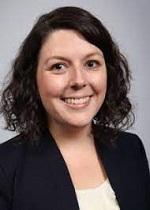Seeing the Air: An Overview of Atmospheric LIDAR
This webinar is hosted By: Laser Systems Technical Group
26 March 2024 12:00 - 13:00
Without visual tracers like clouds, how can we visualize wind patterns or see subvisual gas plumes? How does the aerosol loading in the atmosphere change as a function of height above the Earth? Scientists having been using the LIght Detection And Ranging (LIDAR) technique to answer questions like these for many decades—from the first iterations of the technique using spotlights in the 1930s to the modern laser-based version that took off with the birth of the laser in 1960. Today, atmospheric LIDAR systems are deployed on nearly every type of platform from the ground to air and space.
Researchers continue to use LIDAR to expand our understanding of atmospheric composition and dynamics from the smallest scales (e.g. plumes, turbulence) to the global level from satellite missions such as CALIPSO for aerosol studies and Aeolus for wind profiling. As atmospheric research and data needs progress, LIDAR technology evolves along with advancements in the underlying optics and photonics components. Atmospheric LIDAR instruments have now seen success in the commercial sector and the next generation of satellite-based LIDAR systems are already in the works (e.g. EarthCARE).
In this webinar, Leda Sox will give a brief introduction into the theory of atmospheric LIDAR, review the different types of LIDAR techniques development to-date (e.g. elastic backscatter, DIAL, Doppler wind LIDAR), and highlight some of the important LIDAR programs and work from the past to the present.
Subject Matter Level: Introductory - Assumes little previous knowledge of the topic
What You Will Learn:
• Basic atmospheric optics theory relevant to LIDAR sensing
• Different types of atmospheric LIDAR techniques (aerosol, trace gas, temperature, and winds)
• Historical and recent applications of LIDAR sensing
Who Should Attend:
• Undergraduate and graduate students
• Anyone who wants to learn about atmospheric remote sensing with LIDAR
About the Presenter: Leda Sox from Georgia Tech Research Institute
 Dr. Leda Sox received a BA in Math-Physics from Agnes Scott College and a PhD in Physics from Utah State University. Her research interests involve employing new remote sensing techniques to study all of the atmosphere, from the air we breathe down in the troposphere out to what most consider space, where the rarefied air and charged particles of the ionosphere interact. Her primary research focus has been in LIght Detection And Ranging (LIDAR) techniques with applications in aerosol research and upper atmospheric composition and dynamics. She is currently a Senior Research Scientist and Associate Chief of the Opto-Electronics branch at the Georgia Tech Research Institute where she continues to develop new remote sensing techniques for national security-related applications.
Dr. Leda Sox received a BA in Math-Physics from Agnes Scott College and a PhD in Physics from Utah State University. Her research interests involve employing new remote sensing techniques to study all of the atmosphere, from the air we breathe down in the troposphere out to what most consider space, where the rarefied air and charged particles of the ionosphere interact. Her primary research focus has been in LIght Detection And Ranging (LIDAR) techniques with applications in aerosol research and upper atmospheric composition and dynamics. She is currently a Senior Research Scientist and Associate Chief of the Opto-Electronics branch at the Georgia Tech Research Institute where she continues to develop new remote sensing techniques for national security-related applications.
